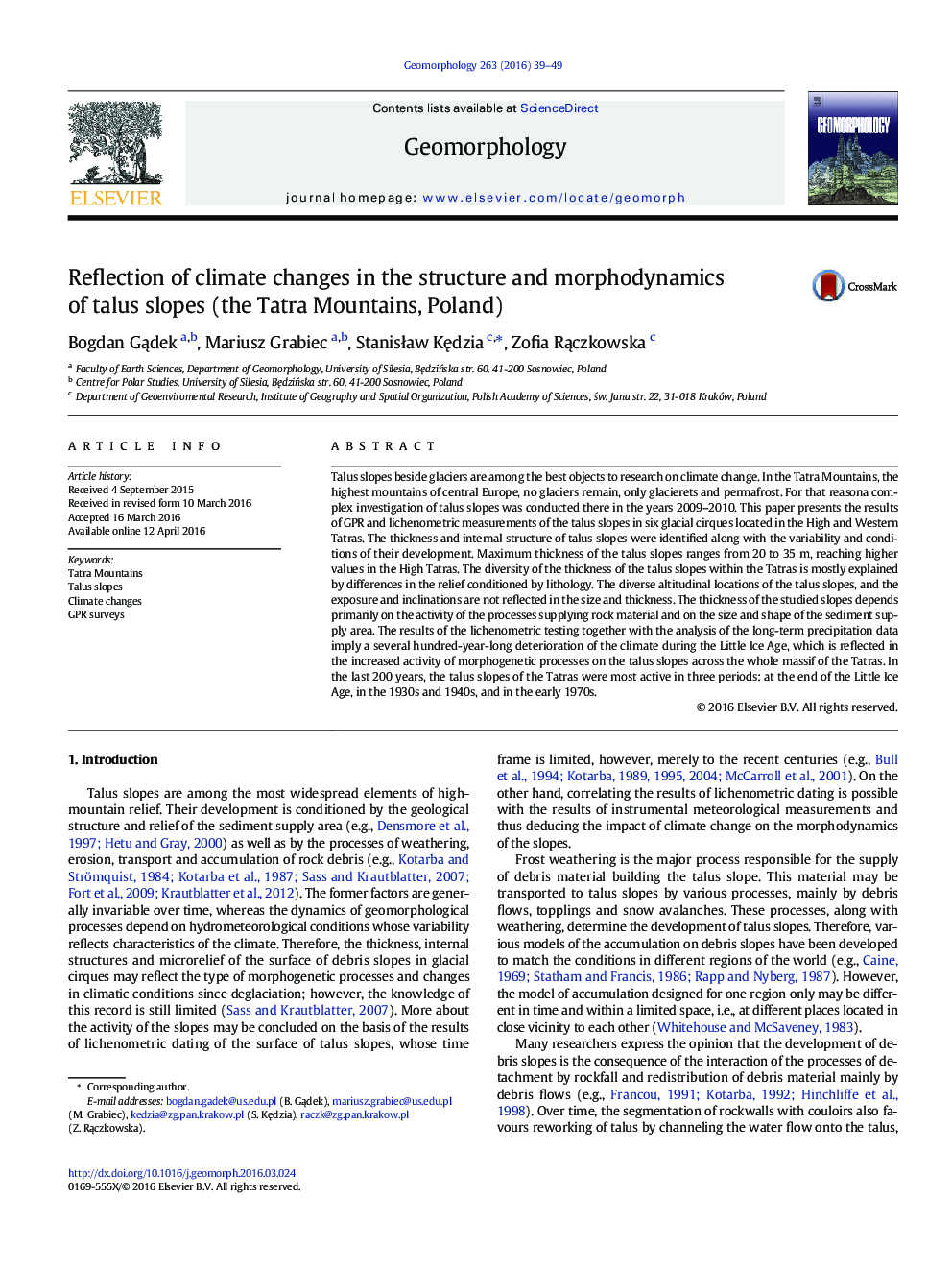| کد مقاله | کد نشریه | سال انتشار | مقاله انگلیسی | نسخه تمام متن |
|---|---|---|---|---|
| 4684029 | 1635386 | 2016 | 11 صفحه PDF | دانلود رایگان |
• In the Tatras maximum thickness of the talus slopes in view of the GPR soundings ranges from 20 to 35 meters.
• In the last 200 years, the talus slopes of the Tatras were most active at the end of the LIA, in the 1930s and 1940s, and in the 1970s.
• The daily total of rainfall is much less important than the intensity of rainfall.
• It can be assumed that with an intensity of 1,0–1,5 mm/min, debris flows may occur about 15 min after precipitation.
Talus slopes beside glaciers are among the best objects to research on climate change. In the Tatra Mountains, the highest mountains of central Europe, no glaciers remain, only glacierets and permafrost. For that reasona complex investigation of talus slopes was conducted there in the years 2009–2010. This paper presents the results of GPR and lichenometric measurements of the talus slopes in six glacial cirques located in the High and Western Tatras. The thickness and internal structure of talus slopes were identified along with the variability and conditions of their development. Maximum thickness of the talus slopes ranges from 20 to 35 m, reaching higher values in the High Tatras. The diversity of the thickness of the talus slopes within the Tatras is mostly explained by differences in the relief conditioned by lithology. The diverse altitudinal locations of the talus slopes, and the exposure and inclinations are not reflected in the size and thickness. The thickness of the studied slopes depends primarily on the activity of the processes supplying rock material and on the size and shape of the sediment supply area. The results of the lichenometric testing together with the analysis of the long-term precipitation data imply a several hundred-year-long deterioration of the climate during the Little Ice Age, which is reflected in the increased activity of morphogenetic processes on the talus slopes across the whole massif of the Tatras. In the last 200 years, the talus slopes of the Tatras were most active in three periods: at the end of the Little Ice Age, in the 1930s and 1940s, and in the early 1970s.
Journal: Geomorphology - Volume 263, 15 June 2016, Pages 39–49
